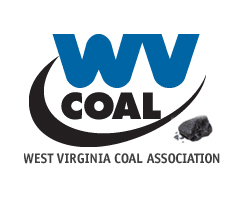|
In a significant victory for the coal industry, the U.S. Supreme Court granted state and industry requests to stay enforcement of the U.S. Environmental Protection Agency’s (EPA) Ozone Transport Rule pending disposition of the case in the U.S. Court of Appeals for the District of Columbia Circuit (D.C. Circuit) and any subsequent timely review sought by the Supreme Court on the merits. The National Mining Association (NMA) immediately released a press release praising this decision. Last October, the NMA filed an emergency application for immediate stay of EPA’s final rule, following a divided panel of the D.C. Circuit denying our and the states’ stay requests. Today, the Supreme Court issued a favorable 5-4 ruling with Justice Gorsuch writing the majority opinion supported by Chief Justice Roberts, Justice Thomas, Justice Alito, and Justice Kavanaugh. Justice Barrett filed a dissenting opinion joined by Justice Sotomayor, Justice Kagan, and Justice Jackson.
The majority found that we are likely to prevail on the merits of our claim that EPA acted arbitrarily and capriciously because the final rule was not “reasonably explained” and “ignored ‘an important aspect of the problem.’” In our Supreme Court application, the NMA joined nine industry parties, including trade association allies and electric cooperatives, in arguing that the Ozone Transport Rule (also known as the Federal Implementation Plan or FIP) is “irreparably flawed.” We argued that the FIP as promulgated no longer exists given regional court decisions to stay EPA’s disapproval of 12 state implementation plans (SIPs), which act as the predicate for the implementation of the FIP. As the Supreme Court recognizes, “Together, these 12 States accounted for over 70 percent of the emissions EPA had planned to address through its FIP.” Opinion at 9. Yet, EPA continued to charge forward in implementing the rule in 11 states without ever analyzing a smaller and transformed program. Our stay application also argued that EPA’s FIP abrogated the rights of states to regulate air pollution within their own borders, and absent a stay, industry would be irreparably harmed by nonrecoverable compliance costs pending a decision on the merits while threatening grid reliability.
The question in front of the Court involved the SIP disapprovals and “whether the emissions controls imposed by the [FIP] are reasonable regardless of the number of States subject to the Rule.” As the majority asked: “What happens—as in fact did happen—when many of the upwind States fall out of the planned FIP and it may now cover only a fraction of the States and emissions EPA anticipated?” Opinion at 12. The Court found that “[a]lthough commenters posed this concern to EPA during the notice and comment period, EPA offered no reasoned response.” Id.
The majority pointed out that during oral argument the government admitted “it could not represent with certainty whether the cost-effectiveness analysis it performed collectively for 23 States would yield the same results and command the same emissions-control measures if conducted for, say, one State.” Opinion at 12-13. While the majority opined that there could be “some explanation why the number and identity of participating States does not affect” this analysis, that explanation “does not appear in the final rule.” Opinion at 13. Accordingly, the majority held that “applicants are likely to prevail on their argument that EPA’s final rule was not ‘reasonably explained’,’ that the agency failed to supply a ‘satisfactory explanation for its action[,] and that it instead ignored ‘an important aspect of the problem’ before it.” Id. (internal citations omitted).
The majority rejected the government’s alternative arguments. First, the majority disagreed that the severability provision EPA added to the Ozone Transport Rule demonstrated that the agency considered this issue. The majority found that “EPA’s response did not address the applicants’ concern so much as sidestep it.” Opinion at 14. Second, the government argued that the applicants did not raise the concern about the SIP disapprovals with the appropriate specificity for the agency to respond. The majority disagreed, pointing to EPA’s own response to comments: “By its own words and actions, then, the agency demonstrated that it was on notice of the applicants’ concern. Yet as we have seen, it failed to address the concern adequately.” Opinion at 16. Third, the government argued that the applicants must ask the agency to reconsider the Ozone Transport Rule before presenting objections in court because the grounds for those objections arose after the public comment period. The majority dismisses this argument, stating “[n]othing requires the applicants to return to EPA to raise (again) a concern EPA already had a chance to address.” Opinion at 17.
On the other hand, the dissent concludes that applicants “have not shown a likelihood of success on the merits,” Dissent at 5, and that the majority “enjoins the enforcement of a major [EPA] rule based on an underdeveloped theory that is unlikely to succeed on the merits.” Dissent at 1. The dissent asserts that the majority: (1) “downplays EPA’s statutory role in ensuring States meet air-quality standards,” (2) “fails to recognize that EPA’s SIP disapprovals may, in fact, be valid;” (3) disagrees that EPA failed to respond to commenters warnings, because those comments did not raise with specificity the objections now raised in this case regarding the reasonableness of applying the FIP to a subset of originally covered States; and (4) provides “no evidence that the FIP’s emissions limits would have been different for a different set of States or that EPA’s consideration of state-specific inputs was anything but confirmatory of the limits it calculated based on nationwide data.” Dissent at 2-4.
The dissent ultimately concludes that “the final rule and its supporting documents suggest that EPA’s methodology for setting emissions limits did not depend on the number of States in the plan, but on nationwide data for the relevant industries[.]” Dissent at 4. The dissent further explains: “Given the explanations and state-agnostic methodology apparent in the final rule and its supporting documentation—and the paucity of comments specifically raising the issue—EPA may well have done enough to justify its plan’s severability.” Dissent at 12.
The NMA continues to pursue this case on the merits in the D.C. Circuit. In April, we joined our industry partners in filing our opening brief. Our reply brief in response to EPA is due July 29, 2024, and final briefs are due on Aug. 22, 2024.
If you have any questions regarding this litigation matter, please contact me at tbridgeford@nma.org or (202) 463-2629.
|














.gif)














